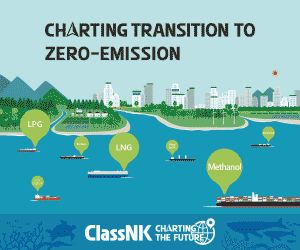Drewry has analyzed scenarios and alternatives regarding the impact of a hypothetical closure of the Strait of Hormuz.
According to Drewry, the Gulf region’s booming construction and industrial sectors emphasise the importance of this chokepoint in facilitating the transport of project carriers, general cargo and handysize vessels.
Moreover, the distribution of critical goods such as grain, chemicals, furniture and machinery in the Middle East partly relies on breakbulk and bulk cargo, given that countries in the Arabian Gulf depend heavily on imports. Consequently, any disruptions to this transportation method could greatly affect the end-to-end supply chain.
Scenario 1: Transit via the Strait of Hormuz and increased freight costs
Currently, vessels transiting through the Strait of Hormuz, the most likely/preferred route, must bear additional war risk premiums. These premiums for vessels operating in the Persian Gulf are estimated about 0.05% to 0.07% of a ship’s hull and machinery value for a typical seven-day stay, according to chartering sources.
This rate has remained largely stable over the past 18 months. However, if tensions between Iran and Israel escalate further, a surge in war risk premiums is anticipated, which could inflate freight costs for charterers.
Scenario 2: Transit via alternative routes
If the Strait of Hormuz were to become inaccessible, several alternative routes and strategies could be explored to maintain the movement of vessels. However, each comes with significant operational and economic challenges:
- Port of Duqm, Sohar and Khorfakkan route: Vessels could reroute to Omani ports such as Duqm, Sohar or Khorfakkan in the UAE, using rail and road networks to continue inland transport. While this is feasible, it will substantially increase transit times and end-to-end logistics costs.
- Gulf of Aqaba with overland transport: Another option is sailing through the Gulf of Aqaba and utilising overland routes to reach final destinations. However, this route also faces constraints, including regional instability and limited infrastructure capacity.
Key challenges with alternative routes
- Rising operational costs
- Extended transit times
- Complex logistics and coordination
Drewry highlighted that while the closure of the Strait of Hormuz would undoubtedly disrupt global shipping, the complete cessation of its use is highly unlikely due to the significant geopolitical and economic repercussions.
The exploration of alternative routes, such as Oman, Khorfakkan or Aqaba, presents viable options; however, they come with inherent challenges that could impact the cost-effectiveness and efficiency of multipurpose shipping operations.
Therefore, maintaining the security and openness of the Strait of Hormuz remains paramount for the stability of global trade networks, Drewry concluded.































































